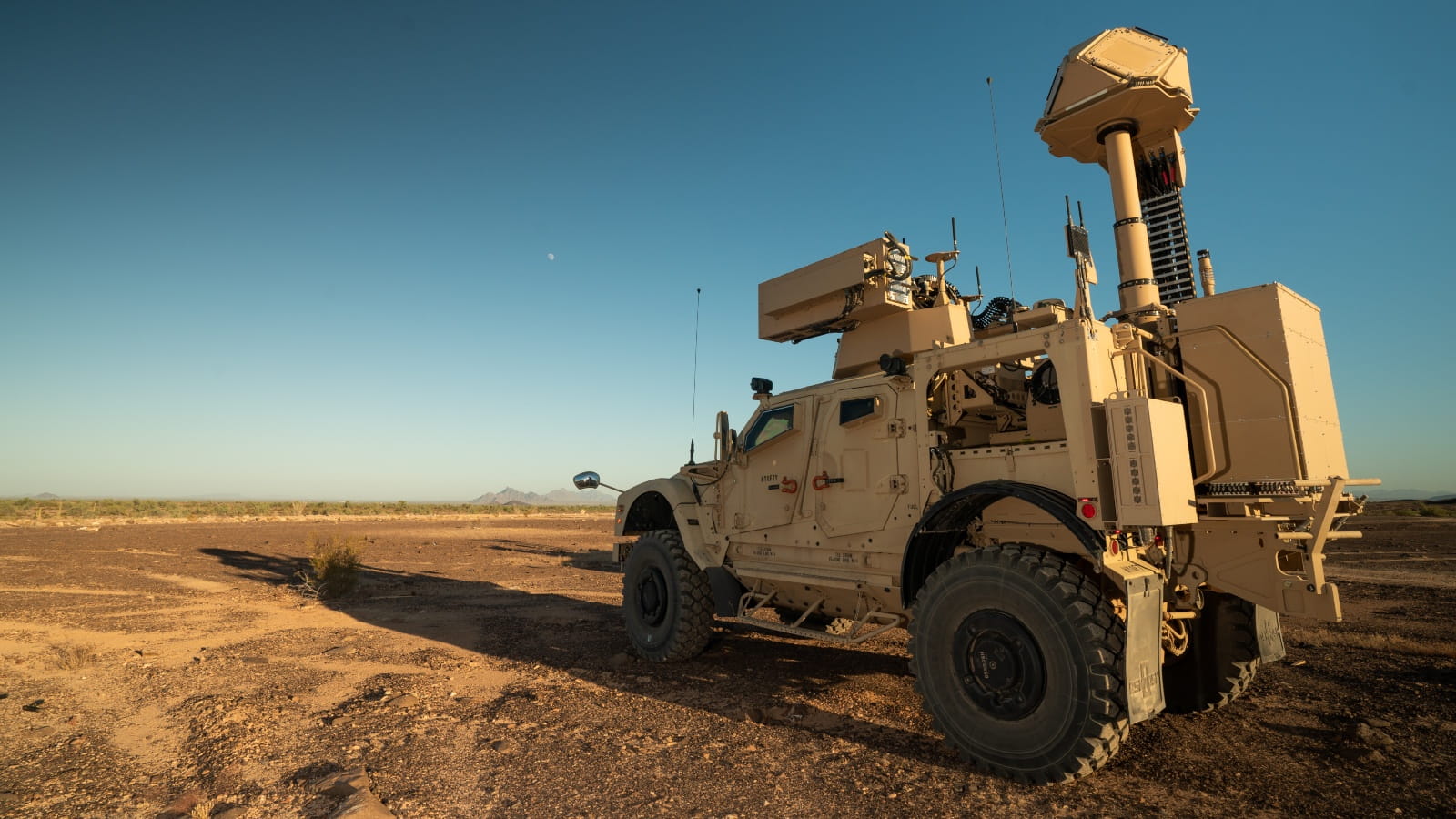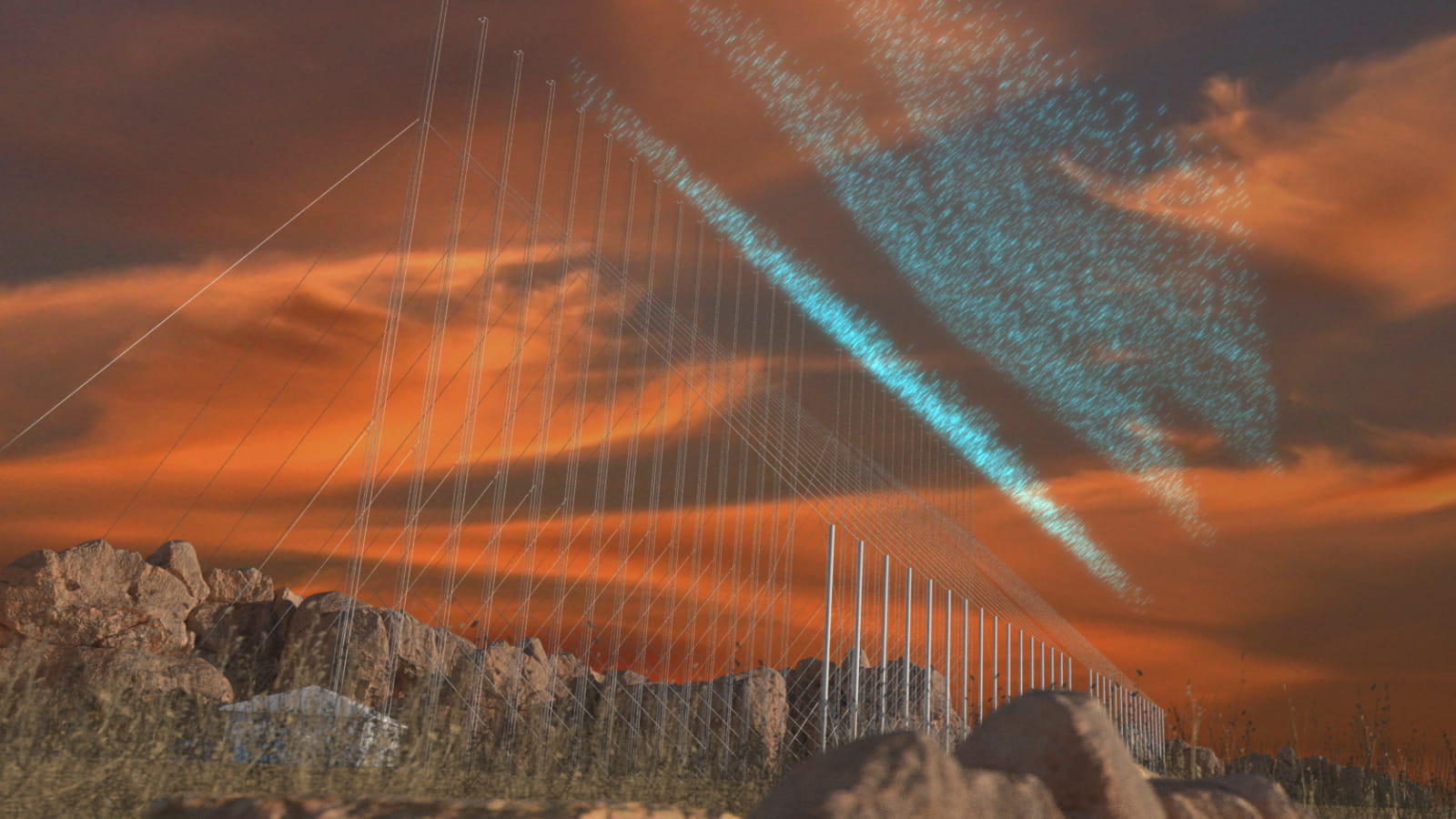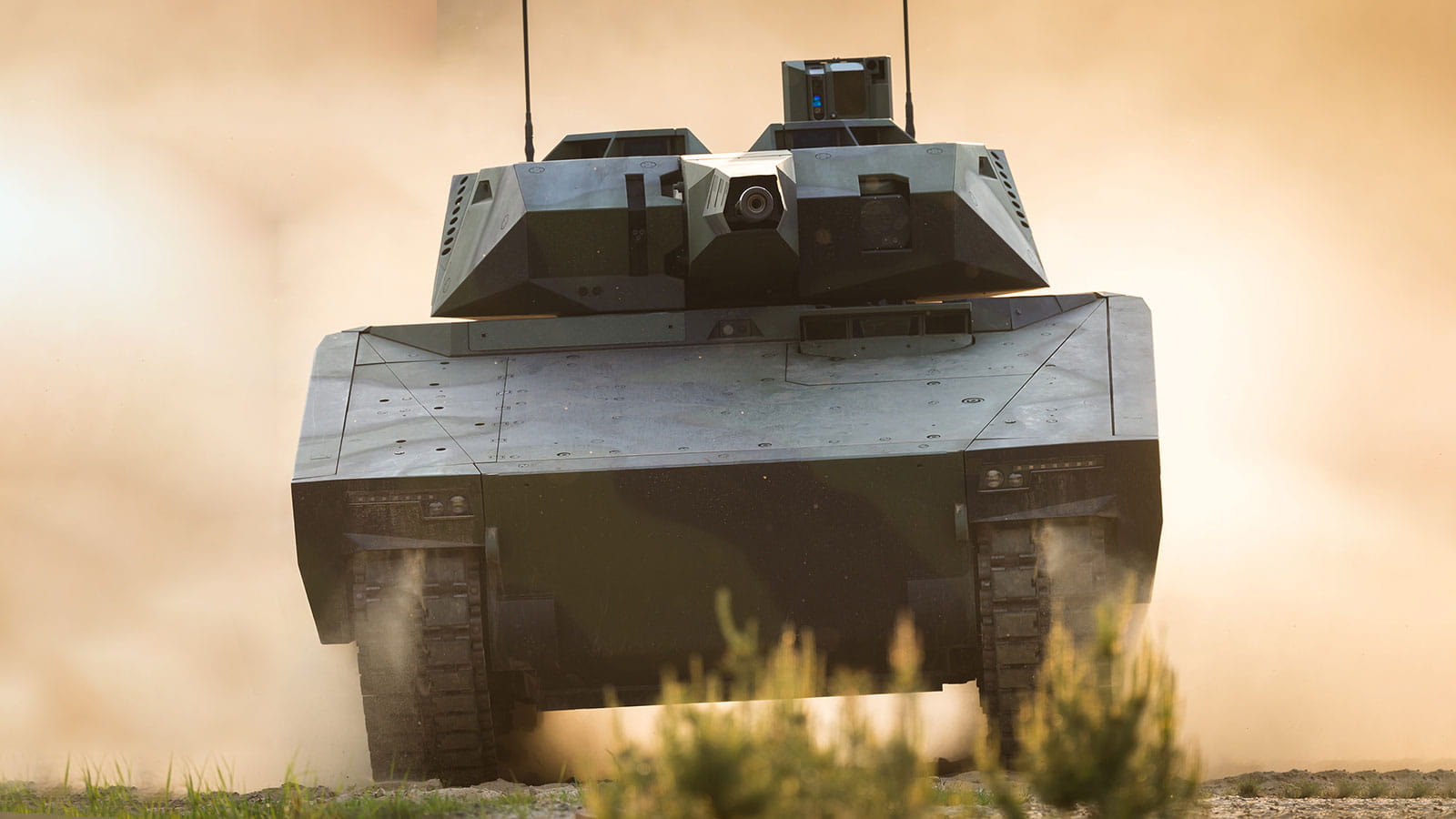Birds, planes, drones – KuRFS radar can spot them all
KuRFS: It stands for Ku-band Radio Frequency System. And it stands up against enemy drones, along with artillery and other small, fast threats.
“KuRFS is tailor-made for the counter-UAS mission, and no other radar in the world does this mission as effectively,” said Will Strauss, technology director for short- and medium-range ground-based air defense programs at Raytheon.
Developed in partnership with the Army, the radar was originally built to help defeat rocket, artillery and mortar, or RAM, attacks in the Afghanistan and Iraq wars. It was fielded in 2013 for a new mission – short-range air defense, or SHORAD, and it has surpassed 1.6 million operational hours.
Today, the Army operates nearly 60 KuRFS radars around the world, providing persistent 360-degree surveillance – detecting, tracking and discriminating airborne objects. Though it’s specifically used for SHORAD missions , KuRFS can see helicopters and planes up to and beyond 100 kilometers (62 miles).
Once KuRFS finds threats, it warns and cues defensive weapons to intercept them using kinetic effectors and non-kinetic engagement such as directed energy. Its ability to detect threats from long distances gives soldiers stand-off distance for safety and ample time to make an engagement decision.
And it keeps getting better. KuRFS continues to evolve to stay ahead of threats. Raytheon works closely with the Army to update and sustain the system for reliable performance and readiness in all environments where they operate.
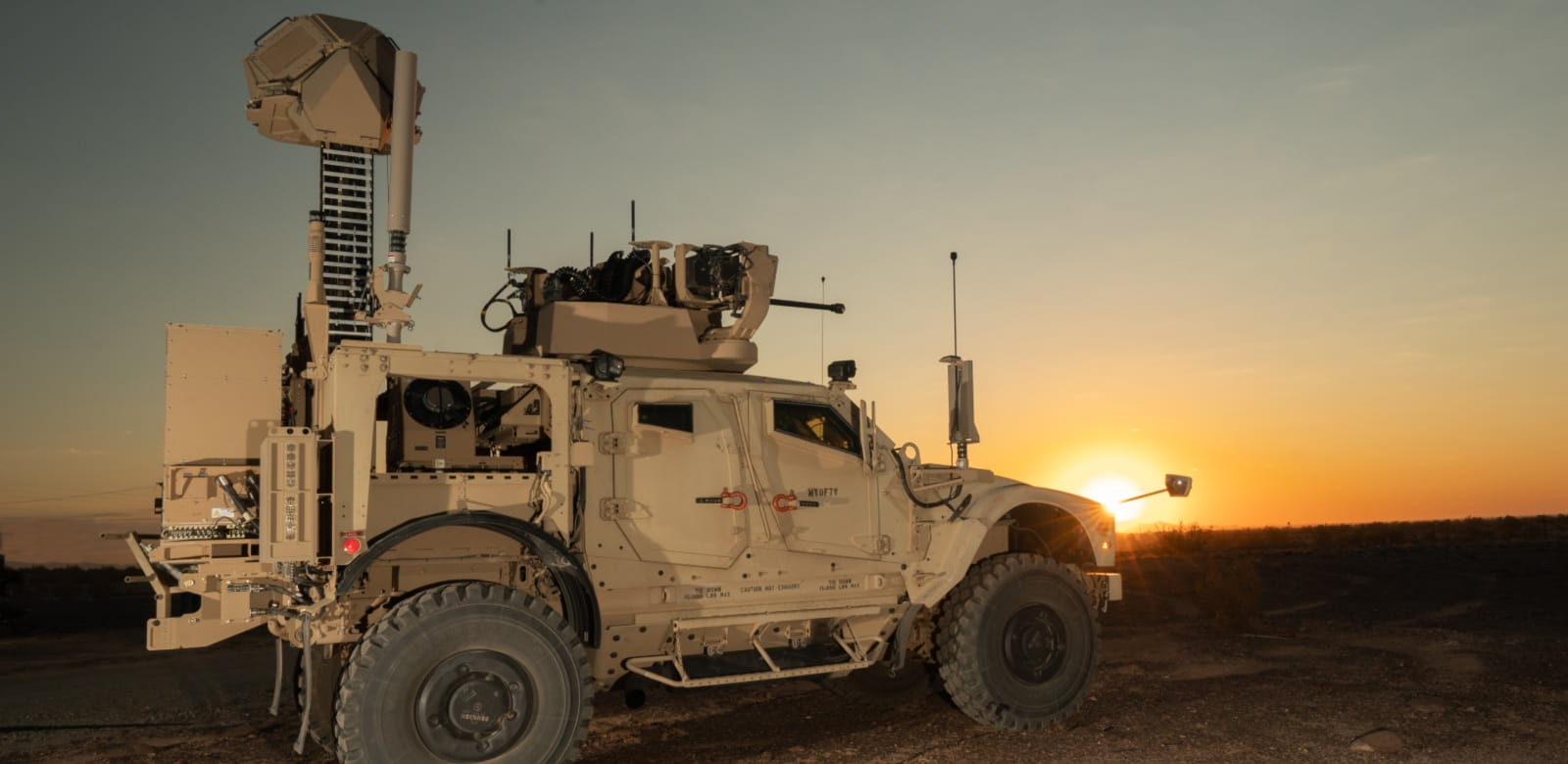
The Ku-720 mobile sensing radar and Coyote effectors were used to detect and defeat enemy drones in a 2022 test at the U.S. Army Yuma Proving Ground in Arizona.
Evolves with threats
Adversarial drones are a proliferating threat – a relatively low-cost tool for conducting intelligence, surveillance, reconnaissance and attack missions against critical assets and forces around the globe. Because they are readily available, these hostile vehicles’ capabilities and tactics are quickly evolving.“Adversaries are spending less time making their drones resistant to attack,” Strauss said. “They’re more focused on creating a wide variety of low-cost drones – from very small and slow UASs to larger and slightly faster ones. But KuRFS can detect all of them.”
In fact, it’s specifically designed for a changing threat environment.
“From the ground up, KuRFS is an agile and scalable digital sensor, continually able to adapt to the evolving and most challenging SHORAD threats,” said Don Williams, Requirements and Capabilities director for SHORAD programs at Raytheon.
While KuRFS started out as a sense-and-warn radar, its precision targeting capabilities and reliable performance have made it highly effective for expanded missions, such as air surveillance, counter-RAM and now, counter-UAS.
Sees through clutter
KuRFS uses active electronically scanned array, or AESA, technology that enables exact steering of its beam toward a threat. The radar owes its precise sensing and fire control to its operation on the Ku-band of the electromagnetic spectrum.
The Ku band’s short wavelengths produce significantly sharper image resolution than other parts of the electromagnetic spectrum, and it enables the KuRFS radar to tell the difference between many small objects at once. It can even see and identify an incoming 9 mm bullet.
That makes it optimal for picking small UAS out of a group of objects or clutter.
“The wave doesn’t get lost or degrade the farther out it searches,” Williams said.
The KuRFS radar is not large, but it’s big on benefits. Mounted on a pallet, the system is almost four feet in diameter. On a vehicle, it’s about three feet. And, in a distributed configuration, each aperture mounted on the four corners of a vehicle are about 20 inches square.
“KuRFS bolsters a layered defense by ensuring efficient and low-cost SHORAD operations. Warfighters can take it wherever they go, with confidence that the radar is up to the mission,” Williams said. “Even as adversaries adapt from a single-threat environment to multiples to highly integrated swarms of drones, KuRFS meets that challenge.”
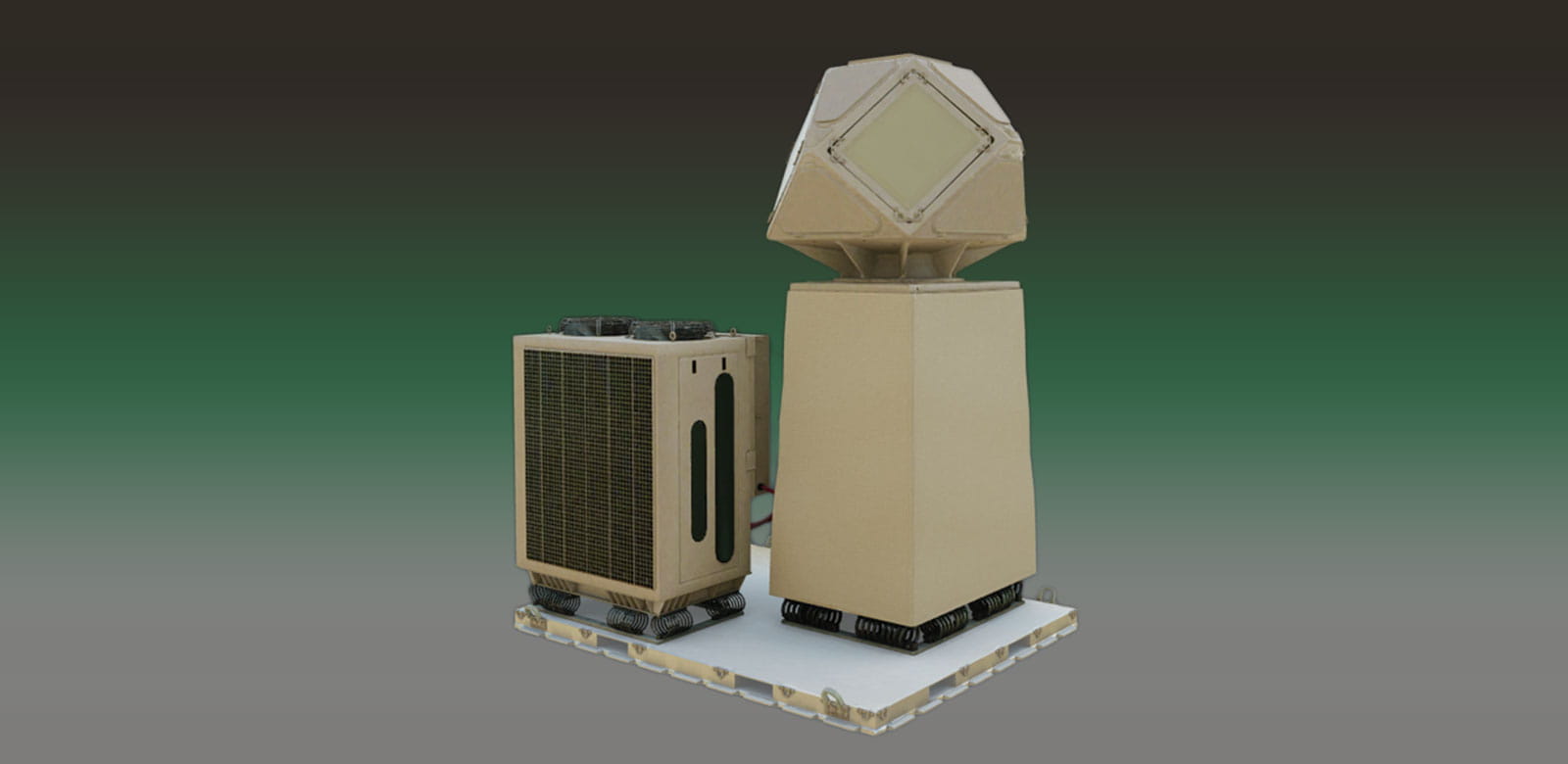
In a fixed or mobile configuration, KuRFS has proven effective in detecting, tracking and identifying in-coming threats, including objects as small as a 9mm bullet.
Meets many missions
KuRFS is integrated with more than 15 weapon systems, including Raytheon's land-based Phalanx weapon system family of effectors and Phaser high-power microwave, as well as HELWS, a high-energy laser weapon system. KuRFS is integrated with the Forward Area Air Defense Command and Control system for the Army's SHORAD system. And the radar also provides the cueing data for 50-caliber guns and 30mm cannons.
For counter-UAS engagements, KuRFS gives the Coyote effector superior sensing capability against a broad set of UAS threats over a long range, detecting even the smallest class of drones out beyond 15 kilometers.
"It provides the operator of any system it's integrated with flexibility and a clear, accurate vision for quick decision-making to defeat a threat target," Strauss said.
KuRFS can also be deployed to stand sentry by itself in a "sense-and-warn" mission, "so that if a base is under attack, the radar gives troops enough time to seek cover," Strauss said.
Weaves a digital thread
Digital technologies, such as artificial intelligence and machine learning, play a key role in KuRFS' capacity to outpace current and future threats. Engineers use digital engineering in every stage of the sensor's lifecycle, from design to production to sustainment. It not only supports the rapid deployment of new capabilities, like software upgrades, but also helps inform performance assessments through modeling and simulation as well as verification that systems meet customer requirements.
"We've always used cutting-edge design techniques for AESA radars, and our digital modeling of each system covers almost all the disciplines – from mechanical, thermal, stress, electrical and RF to sustainment and human factors," Strauss said.
Digital engineering allows Raytheon to collaborate with the Army in real time, moving faster to bring together better ideas, designs and capability.
"Together, we're continuing the evolution of KuRFS, updating it and adding new capabilities to enhance its performance, increase reliability and cut costs. All this helps keep us ahead of advanced adversarial techniques," Strauss said.

